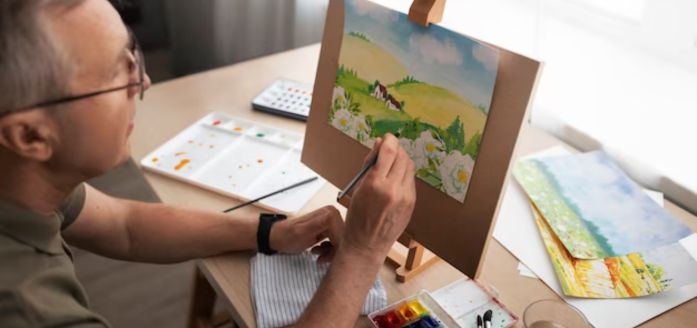Advertisement

Mastering Watercolor Painting Techniques for Luminous Florals
Watercolor painting is a captivating art form known for its fluidity, transparency, and luminosity. When it comes to painting florals, watercolors offer a unique opportunity to capture the delicate beauty and vibrant colors of flowers. In this blog, we'll explore some essential techniques to create luminous floral paintings that exude life and brilliance.
1. Layering Colors: One of the key techniques in achieving luminous florals is layering colors. Start with light washes of color to establish the basic shapes of your flowers. Then, gradually build up layers of transparent colors, allowing each layer to dry before adding the next. This technique creates depth and richness in your floral compositions, mimicking the subtle variations in petal tones and enhancing the luminosity of your painting.
2. Wet-on-Wet Technique: The wet-on-wet technique involves applying wet paint onto a wet paper surface. This allows colors to blend seamlessly and creates soft, diffused edges, perfect for capturing the gentle, organic shapes of petals. Experiment with this technique by dropping different hues onto damp paper and letting them mingle and flow together, resulting in beautifully blended petals with a luminous quality.
3. Negative Painting: Negative painting involves painting around the subject to define its shape, rather than painting the subject itself. This technique is particularly effective for creating intricate floral patterns and adding depth to your compositions. By carefully painting around the petals and leaves, you can create layers of color that interact with each other, enhancing the overall luminosity of your painting.
4. Dry Brush Technique: The dry brush technique involves using a relatively dry brush with minimal water and paint to create textured, expressive strokes. This technique is ideal for adding details such as veins on petals or the fine lines of flower stamens. By lightly dragging the dry brush across the paper surface, you can create delicate, luminous details that bring your florals to life.
5. Glazing: Glazing involves applying thin, transparent layers of color over dried layers of paint. This technique allows you to adjust the hue and intensity of your colors while adding a luminous sheen to your painting. Experiment with glazing different colors over each other to create subtle shifts in tone and enhance the overall vibrancy of your florals.
6. Use of White Space: Don't be afraid to leave areas of white space in your painting to create contrast and emphasize the luminosity of your florals. White space can represent highlights on petals or areas where light is reflecting, adding depth and dimension to your composition.
7. Experimentation and Practice: Above all, don't be afraid to experiment with different techniques and approaches to watercolor painting. Each artist has their own unique style and preferences, so take the time to explore what works best for you. Remember that practice is key to mastering any skill, so keep painting and experimenting with new ideas to refine your technique and create truly luminous floral masterpieces.
In conclusion, watercolor painting offers a myriad of techniques for capturing the luminous beauty of florals. By mastering techniques such as layering colors, wet-on-wet painting, negative painting, dry brush technique, glazing, and strategic use of white space, you can create stunning floral compositions that radiate with life and brilliance. So grab your brushes, pick up some vibrant watercolors, and let your creativity bloom on paper!
Advertisement